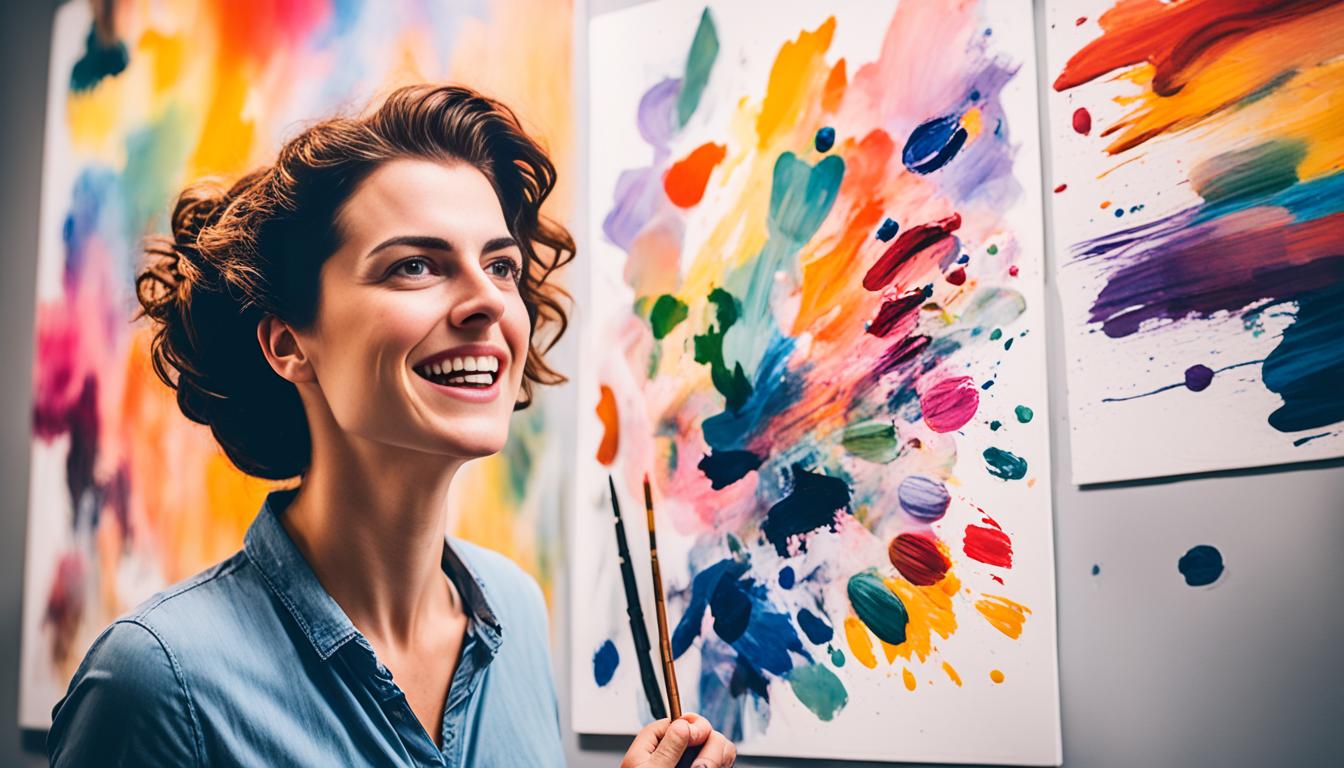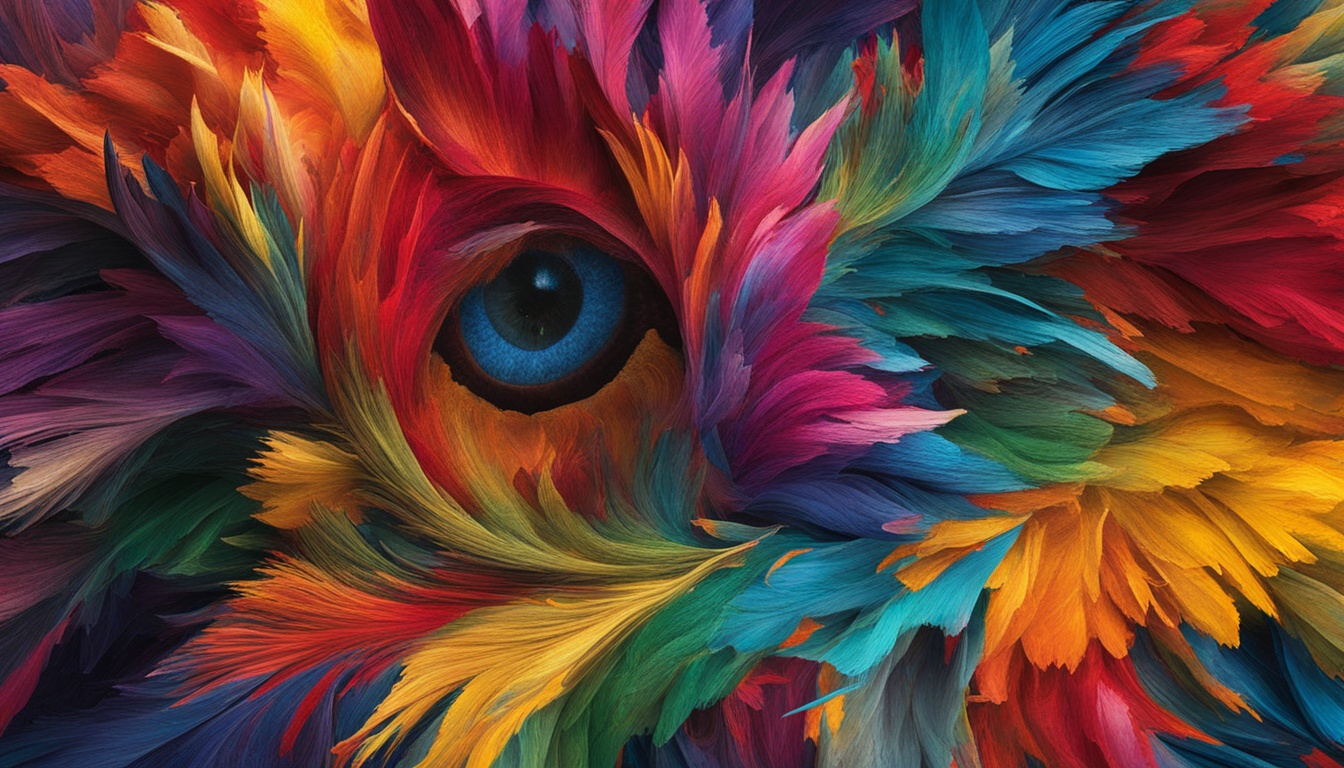Beauty in art is a personal experience shaped by your cultural background, tastes, and feelings. It isn’t a fixed idea but a fluid concept that varies for each person. Your perceptions are influenced by cultural norms, personal history, and individual preferences. What you find beautiful may differ from someone else’s view. By exploring these influences, you’ll gain a deeper understanding of how beauty in art reflects our cultural dialogues and individual perspectives.
Key Takeaways
- Beauty in art is subjective, shaped by personal perception, emotions, and individual experiences.
- Cultural values influence aesthetic standards, affecting how different societies interpret artistic beauty.
- Appreciation of art evolves with exposure, understanding of techniques, and awareness of its cultural or historical context.
- Artistic beauty is an interactive, personal experience, reflecting diverse tastes and cultural dialogues.
- Recognizing the fluid, subjective nature of beauty allows for broader engagement with varied artistic expressions.

What makes a piece of art truly beautiful? That question has puzzled many for centuries, and the answer often depends on personal perspective. The subjectivity of beauty plays a significant role here—you might find yourself captivated by a painting that leaves someone else indifferent. What resonates with you might not evoke the same feelings in others, highlighting how personal experiences, emotions, and preferences shape your view of art’s beauty. Cultural influences further complicate this picture, as they mold your perceptions and aesthetic standards from a young age. In some cultures, intricate patterns and vibrant colors are celebrated as beautiful, while in others, minimalism and subtlety are prized. These cultural values influence what you consider attractive or meaningful in an artwork, making beauty a fluid, context-dependent concept rather than a fixed standard.
Beauty in art is subjective, shaped by personal experiences, emotions, and cultural influences that vary across individuals and societies.
As you explore different art styles, you’ll notice that what appeals to you can shift depending on your cultural background or personal experiences. For example, someone raised in a tradition that values harmony and balance might find beauty in classical paintings that emphasize symmetry. Conversely, a person from a culture that appreciates boldness and innovation might be drawn to modern or abstract art. These cultural influences shape how you interpret colors, forms, and themes, ultimately guiding your aesthetic judgments. Engaging with artistic techniques can also enhance your understanding of what contributes to a work’s beauty and craftsmanship. Additionally, your exposure to diverse art forms can broaden your understanding of aesthetic standards, enriching your appreciation for various artistic expressions. Recognizing that cultural context plays a crucial role in shaping aesthetic preferences can deepen your engagement with art. It’s important to realize that there’s no universal measure of beauty in art; instead, it’s a reflection of your unique lens shaped by cultural history, social context, and individual taste.
Your appreciation for art can also evolve over time, influenced by new experiences or exposure to different cultures. What once seemed uninteresting might become meaningful as you learn about the stories behind the work or the cultural significance it holds. This highlights the dynamic nature of beauty—it’s not just about the object itself but also about your relationship with it. Recognizing the subjectivity of beauty allows you to approach art with an open mind, understanding that your preferences are just one part of a broader, diverse landscape of aesthetic appreciation. Furthermore, understanding the materials used in art can deepen your appreciation by revealing the craftsmanship and techniques behind the work. The history of art movements also plays a role in shaping how different styles are valued and understood over time.
Ultimately, beauty in art isn’t an absolute quality that exists independently of the viewer. Instead, it’s an interactive experience shaped by cultural influences, personal history, and individual sensibilities. Your perception of what makes art beautiful is deeply personal, yet it also connects you to a larger cultural dialogue about aesthetics. By embracing this subjectivity, you can deepen your appreciation for the richness and variety of artistic expression around you.
Frequently Asked Questions
How Do Cultural Differences Influence Perceptions of Beauty in Art?
You see that cultural differences shape how you perceive beauty in art through cultural symbolism and aesthetic diversity. Different cultures assign unique meanings to colors, symbols, and styles, influencing your judgment of what’s beautiful. Your perception varies based on cultural backgrounds, making beauty in art a diverse experience. Embracing this diversity allows you to appreciate a wider range of artistic expressions and understand the deep cultural roots behind each piece.
Can Beauty in Art Be Objectively Measured or Is It Purely Subjective?
Imagine trying to measure the taste of a sunset—beauty in art sparks the subjectivity debate. You might find harmony in a painting others see as chaotic. While some argue for objective criteria like composition and technique, personal feelings heavily influence perception. Ultimately, beauty in art isn’t easily measurable; it’s shaped by individual experiences, making it more a matter of personal resonance than strict objectivity.
What Role Does Symbolism Play in Defining Aesthetic Beauty?
You see, symbolism plays a crucial role in defining aesthetic beauty by adding layers of meaning that go beyond surface appearance. When you notice visual metaphors and symbolic meaning in a work of art, you connect more deeply with its message. These elements evoke emotions, provoke thought, and create a richer experience. Ultimately, symbolism transforms simple visuals into powerful expressions, making beauty in art more profound and personally meaningful.
How Has the Concept of Beauty in Art Evolved Over History?
You see that the idea of beauty in art has changed over history. You’ve witnessed how historical standards once valued symmetry and realism, but now, artistic innovations embrace abstract forms and emotional impact. As you explore different eras, you realize beauty isn’t fixed—it evolves with cultural shifts and new techniques. This ongoing transformation shows that beauty in art is a reflection of society’s changing tastes and creative expressions.
Are There Universal Standards of Beauty Accepted Across Cultures?
You might wonder if universal standards of beauty exist across cultures. While some aspects, like symmetry or harmony, influence beauty perception globally, cultural variations strongly shape what’s considered beautiful. Different societies emphasize unique features, styles, or meanings, making beauty subjective and diverse. So, although certain qualities are appreciated worldwide, your perception of beauty is deeply influenced by cultural context, and there’s no single standard embraced universally.
Conclusion
Ultimately, beauty in art invites you to see beyond the surface, to feel beyond the words, and to connect beyond the moment. It challenges you to seek harmony in chaos, to find meaning in mystery, and to embrace imperfections as part of perfection. In appreciating beauty, you open yourself to wonder, to reflection, to growth—because true beauty in art is not just what you see, but what you feel, understand, and carry with you long after.









